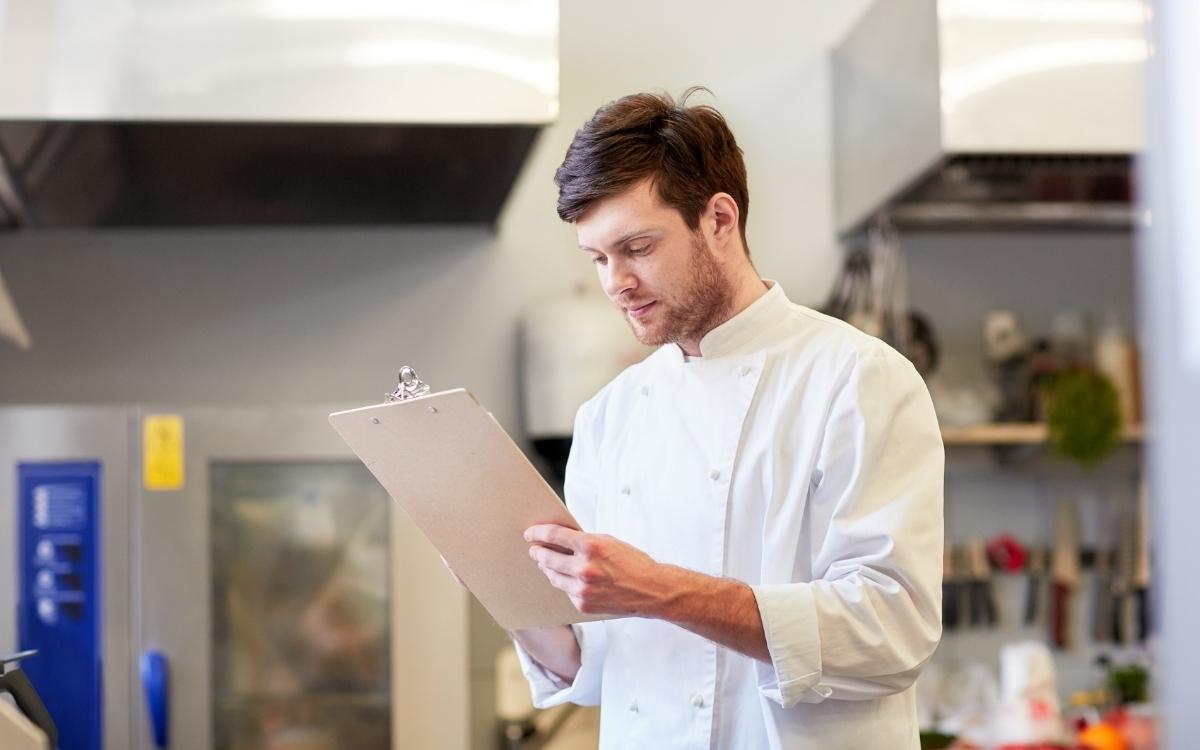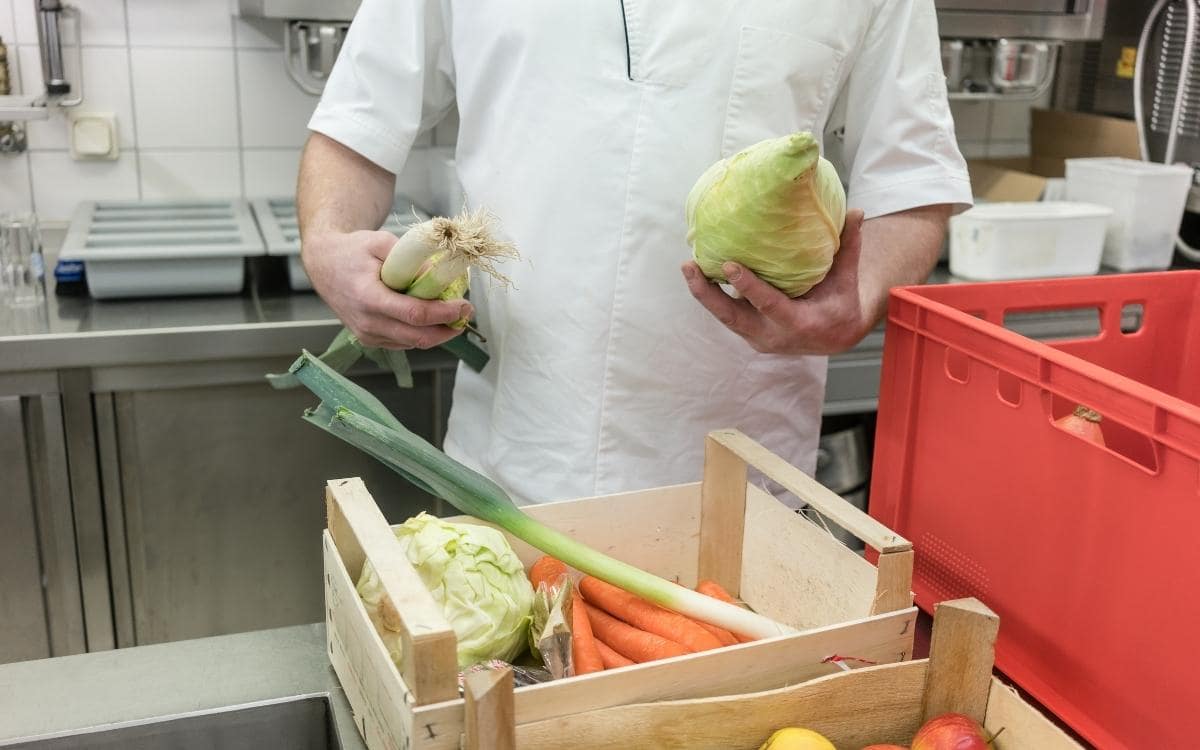Food reception in a restaurant: what it is and how to apply it
One of the key points of the restaurant logistics It's the reception of food. When it comes to receiving raw materials at your restaurant, there are a lot of things that can go wrong, from rotten produce and other quality issues, to food stored at unsafe temperatures.
That's why it's vital to create efficient merchandise reception practices. If there's a problem with the reception, it will affect everything else until it ultimately affects the quality of the food served to your customers.
In your restaurant, you must carefully monitor the quality and safety of receiving products. To do this, it is important that you implant a process of reception of food suitable.
Here we explain how to develop it and what you must include to ensure you have quality raw materials at all times.

What is receiving food and why is it important?
Knowing the importance and knowing that efficient food reception is in your restaurant allows you to optimize processes and create good reception practices and Storage of food.
La reception of food is the process of delivering the raw materials you need in your restaurant. This process starts once the menu has been planned and purchased The products dictated depending on it.
Receiving raw materials includes inspecting deliveries to assess quality and determine the quantity of products, verify prices and reach a decision of acceptance or rejection.
A carefully planned menu and a skilful purchase are useless if optimized processes are not applied to the reception of food to ensure good quality control in food.
Good reception techniques can maximize the results of other processes in your restaurant's logistics.
There's also the financial impact that proper reception practices can have on your bottom line. If you lose part of your order due to a lack of these practices, you also lose the profits that would have resulted from these products.
5 key aspects for a successful reception of raw materials in your restaurant
These are key aspects that you should pay special attention to so that the process of reception of food be successful in your restaurant:
Reception of goods
Receiving means verifying that the food and supplies that were ordered, if they were received in the right quantity, at the right price. The reception of goods is the basis of a chain of events that ends with the food served to your customers.
You must have a suitable person or people for the reception of food. These personnel must be trained so that they can check the details when receiving the products. Food quality requires careful inspection upon receipt.
Food reception area
The reception area is the delivery point for all food and other supplies used in the restaurant.
Here, the accuracy and quality of the order, the weighing, marking and labeling of the items are carried out.
This area must be large enough, with good luminosity and equipped with all the equipment intended for verification (scale, thermometer, meter, density meter, etc.), for the handling and registration of goods.
Food measuring instruments
This includes all the equipment and instruments that allow reception staff to measure weight, check temperature, measure volume or density depending on the type of food they receive.
When purchasing food measuring instruments, take into consideration the quality and guarantee offered by suppliers. This way you will get the most out of your investment.
Classification of raw materials
In a restaurant, the classification of raw materials is crucial for proper packaging and storage.
The storage of vegetables and products in bulk is not the same as the storage of meat or fish. The correct classification of raw materials for storage keeps them fresh and extends their useful life.
Food quality control
The food quality control phase is a fundamental moment in the reception and storage of food.
Therefore, it is advisable to constantly review the measurements, dimensions, sizes, types and conditions of each product that enters the restaurant.

Receiving products: 10 best practices to consider
Implement these good practices so that the reception of products in your restaurant is effective and efficient:
1. Receive food in a designated area that is clean and tidy: this way the reception process will be streamlined and the verification process will be easier
2. Inspect and evaluate the raw material the moment the supplier arrives: the personnel responsible for receiving the food must inspect and evaluate the raw material together with the supplier, in order to detect any abnormality and reject or accept the merchandise at that time.
3. Define the ideal personnel to inspect and store food properly: The staff in charge of receiving must know how to effectively use all the equipment, facilities and forms required at this control point.
3. Define the ideal personnel trained in food handling: once the raw material is received, the correct handling of food, with staff trained to guarantee safety and quality when selling your dishes.
4. Check the temperature of all goods with suitable thermometers: Don't guess food temperatures and don't always trust the truck's thermometer. When you receive the delivery, have your own calibrated thermometer handy to double check each temperature.
5. Make sure the delivery vehicle is clean and free of signs of contamination: Before even looking at any of the food delivered, try to do a quick inspection of the driver and the vehicle in which they arrived. You must ensure that both the driver and the vehicle are clean and hygienic.
6. Always check the expiration date and don't receive faulty products: Check the expiration dates to make sure that the product isn't expired when you receive it, or that it will probably expire before you can fully use it.
7. Check that all products are properly packaged and labeled: Any packaging that has breaks, film/box openings, packaging damage must not be accepted under any circumstances. The lack of care in packaging and transport is a symptom of adulterated foods that are not treated in the right way, so they are not suitable for processing in the kitchen.
8. Limit the time food stays in the inspection area: The time that elapses between receiving the raw material and its conservation must be very short, to avoid any risk of adulteration and, therefore, of food waste.
9. It requires health authorization for those products that must have it: Do not receive any product without proper health authorization if it is a requirement for it
10. Schedule merchandise receipts for off-peak hours: For an optimized process, the ideal is to schedule the reception when you have the lowest influx of customers in your restaurant.
How can Picker help you boost your restaurant?
Picker is a logistics technology company that offers you digital tools that streamline your restaurant's home delivery processes.
You can connect your restaurant through our API to multiple delivery partners. In this way, you expand your coverage and reduce your logistics costs, in addition to providing your customers with the best delivery experience, which helps you build customer loyalty.
Conclusions
Long before any food touches a plate, the practices of reception of food of your establishment can help determine the presence of your restaurant in the market and that you stand out from the competition.
Make sure you have the right staff and procedures to receive food properly: it's a simple way to invest in your long-term success.
Remember that the safety and satisfaction of your customers depends on the receipt of the raw material, since the products, the fresh and high-quality shipments create the basis for the incredible meals you serve in your restaurant.










